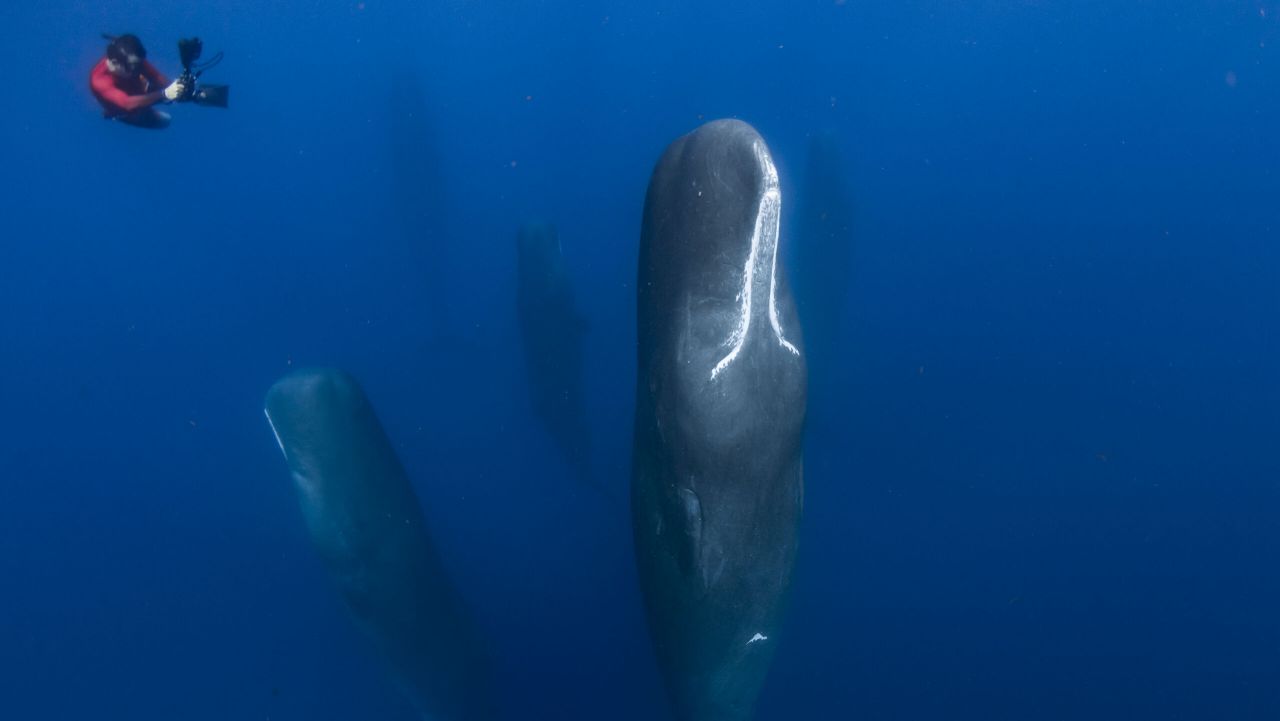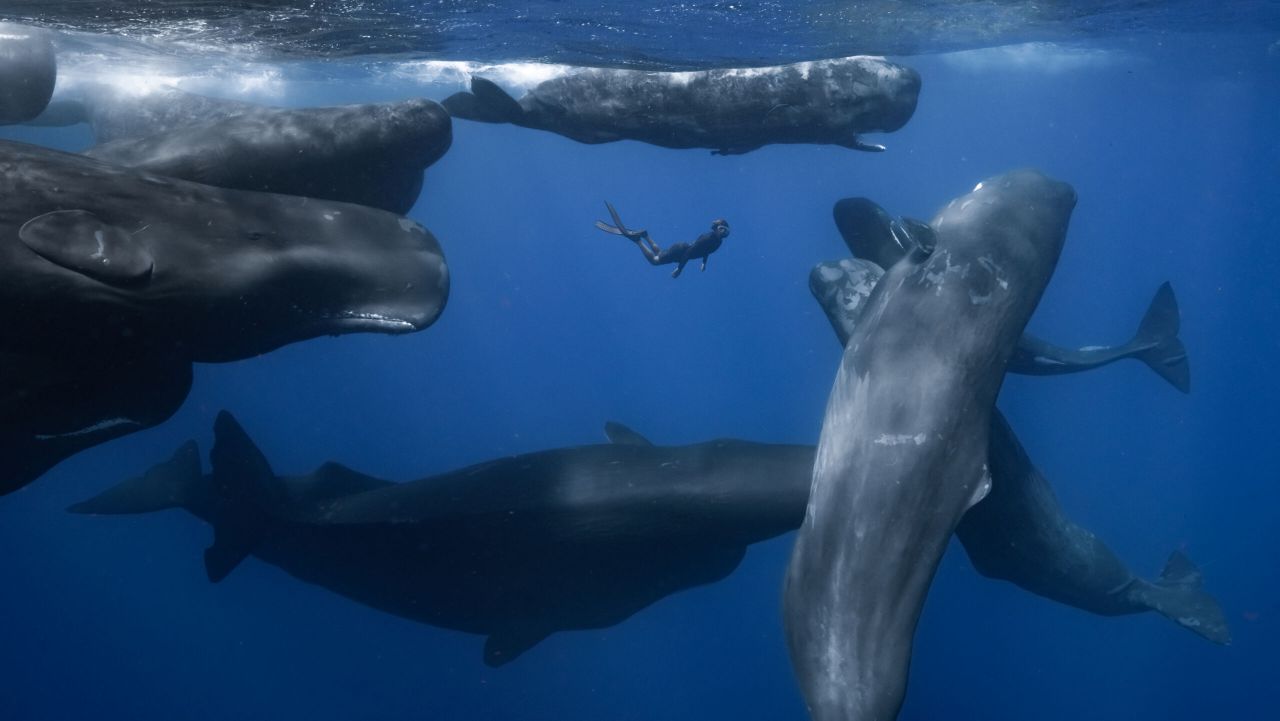Sperm whale (Physeter macrocephalus): the largest of the toothed whales.
Kingdom: | Animalia
Phylum: | Chordata
Class: | Mammalia
Order: | Artiodactyla
Family: | Physeteridae
Genus: | Physeter
Species: | P. macrocephalus

Patrick Dykstra films a sleeping whale. Dominica. Credit: Romain Barats / © Terra Mater Studios GmbH
Size and Weight:
Sperm whales are the largest toothed whales. Sperm whales weigh 15 tons to 45 tons, with males weighing more than females. Females reach physical maturity around 30 years old when they are about 35 feet long. For the first 10 years of life, males are only slightly larger than females. But males continue to exhibit substantial growth until they are well into their 30s. They reach physical maturity around 50 years when they are approximately 52 feet long.
Appearance:
Sperm whales are named after the waxy substance, spermaceti, found in their heads. The spermaceti is an oil sac that helps the whales focus on sound, as sperm whales rely on sound to communicate with each other. These whales are mostly dark grey, with some having white patches on their belly. Some sperm whales turn white as they age.
These whales have a long, block-shaped head that comprises up to a third of their body. Their lower jaw is narrow. These toothed whales have between 20 and 26 large teeth on each side of the lower jaw. Meanwhile, the teeth in the upper jaw rarely break through the gums. Their blowhole is located on the left side of the crown of the head. They have small, paddle-like flippers and triangular flukes. Their small dorsal fins are low, thick and typically rounded.
Diet:
Sperm whales are the largest toothed predator. These whales consume squid, sharks, skates and fish that occupy deep ocean waters. They dive deep in their hunts for food, reaching depths of 2,000 feet for 45 minutes. They can dive over 10,000 feet deep for over 60 minutes. After these deep dives, they come to the surface to breathe and rest.

Patrick Dykstra with a family of sperm whales. Dominica. Credit: Romain Barats / © Terra Mater Studios GmbH
Habitat:
Sperm whales are found in all deep oceans, from the equator to the edge of the pack ice in the Arctic and Antarctic.
Geography:
Sperm whales inhabit all of the world’s oceans. Their distribution is dependent on their food source and breeding conditions. Their migrations are not as predictable or well-understood as the migrations of baleen whales.
Breeding:
Females reach sexual maturity at about 9 years old when they are roughly 29 feet long, at this point, their growth slows. Unlike females, puberty is prolonged for males and will last between the ages of 10 to 20 years old. Although they may be sexually mature beforehand, they often do not participate in breeding until their late twenties.
After a 14 to 16-month gestation period, females produce a single calf. At birth, the calf is about 13 feet long. Calves will eat solid food before one year of age but continue to nurse for several years. Mature females typically produce a calf once every five to seven years until they are about 40 years of age.
Social Structure:
Female sperm whales often form lifelong bonds with other female family members. They typically form social units of about 12 females and their offspring and live in tropical waters. Meanwhile, young males leave these social units when they are 4 to 21 years old and form ‘bachelor schools’ with other males of the same age and size. These bachelor groups migrate toward the poles as they get larger and older. As they migrate North, the groups get smaller as the largest males peel off from the group. Large, sexually mature males occasionally return to the tropical breeding areas to mate.
Lifespan:
Sperm whales are known to live to 60 years of age.
Threats:
Threats to sperm whales include entanglement in fishing gear, vessel strikes, pollution and climate change.
Conservation Status:
The sperm whale is classified as Vulnerable by the IUCN’s Red List of Threatened Species.
Sources: NOAA Fisheries and NATURE’s “Patrick and the Whale“.
